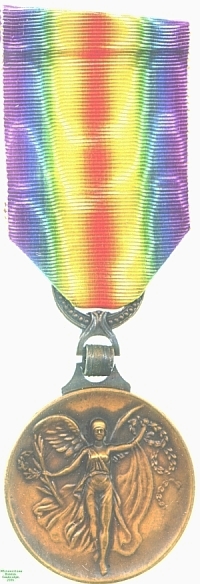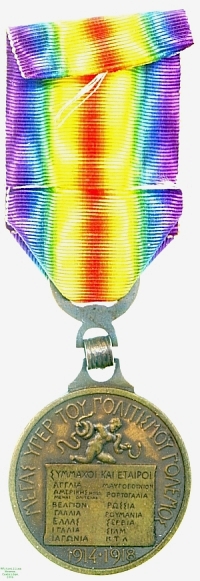Allied Victory Medal 1914-1918 (Greek Unofficial Type II), 1919 (Great War 1914-1918)
When the Great War of 1914-1918 had ended, there was a genuine feeling among the victorious Allies that their military efforts had been instrumental in preserving modern civilization, and this and the united spirit of the Alliance were commemorated in a combined issue of medals to those who had seen active service during the conflict. 13 nations in all issued a variety of this medal; all shared the rainbow ribbon and suspension, and all but the Japanese, who lacked a comparable symbolic figure, used a form of Victory on the obverse and a legend on the reverse.
Some of the countries that issued Victory Medals delayed their official issues for some years, and authorized their veterans to wear interim unofficial copies. This example is such an unofficial version of the Greek issue, distinguishable by a missing letter 'o' in the reverse inscription and the lack of the designer's name in the obverse. It is unnamed, and it cannot be known to whom it was awarded. Lester Watson purchased it in or around the year 1930.
The Museum is grateful to Mr Sawyer Rank for his information on this medal.

